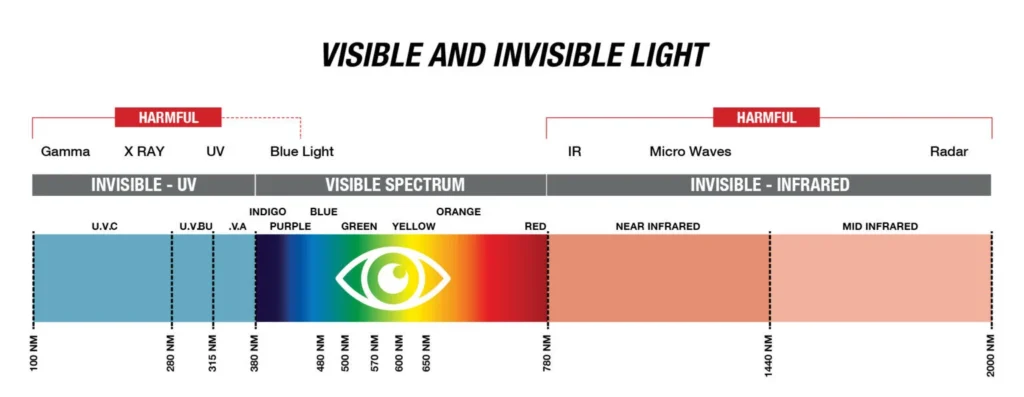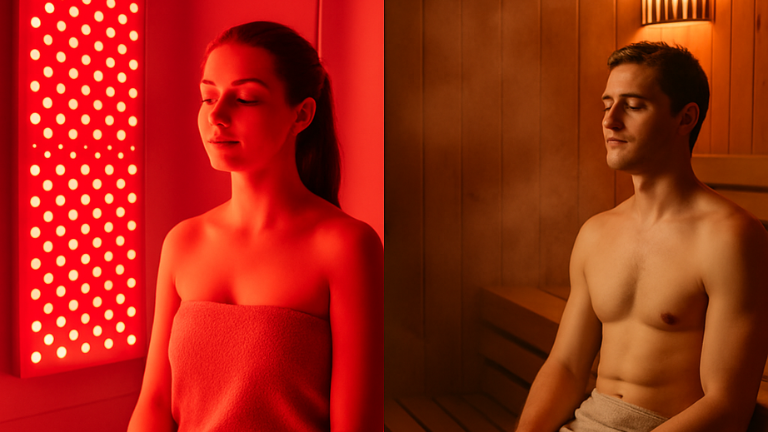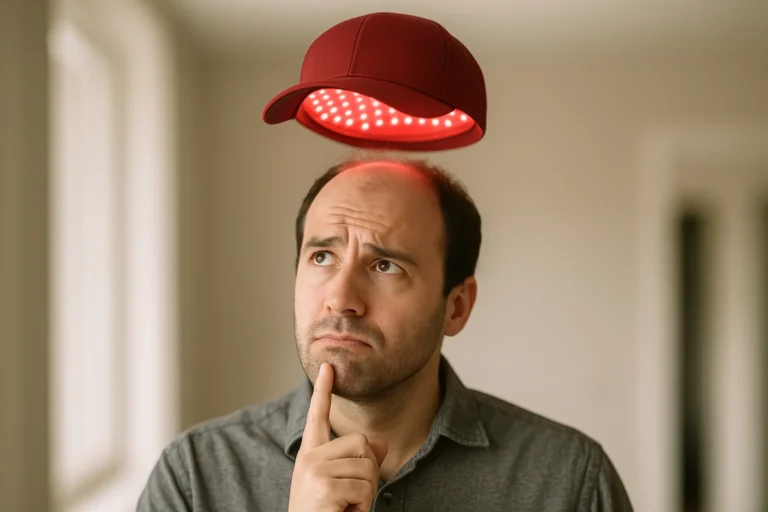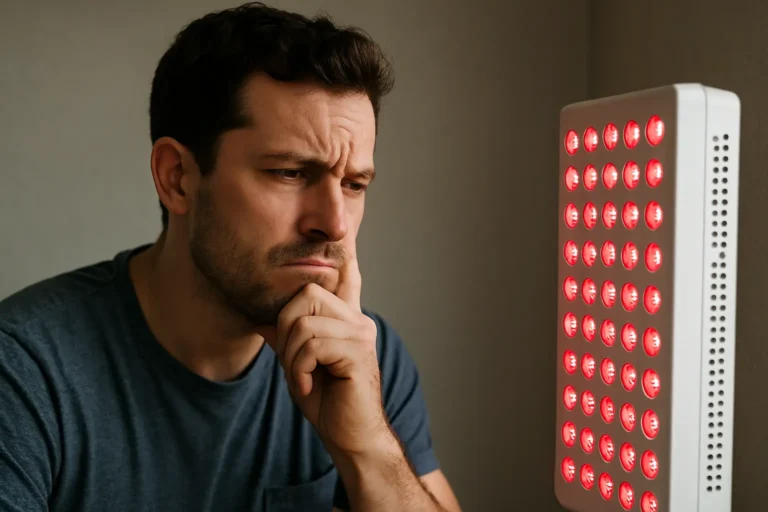Clearing the Red Light Rumors
Red light therapy is having a moment. From Instagram skincare routines to high-end wellness clinics, it’s lighting up everywhere. But with popularity comes questions, and one concern keeps surfacing: “Is this bad for my eyes?”
Let’s address the elephant in the room. Shining light near your face, especially your eyes, might sound risky. After all, we’ve been told since childhood that staring at bright lights is a no-go. So the worry isn’t unfounded, it’s just a little outdated.
This post unpacks the science, busts the myths, and digs deep into what research really says about eye safety and red light therapy. Spoiler alert, it’s not just safe, it might actually be doing your eyes a favor.
What Is Red Light Therapy? (And Why Your Eyes Even Care)
Red light therapy, also called RLT or photobiomodulation, uses low-level wavelengths of red and near-infrared light to activate your body’s natural healing processes. Unlike UV light, which has shorter wavelengths and more energy that can harm skin and eye tissue, red and near-infrared light fall in the 600 to 1100 nanometer range, a gentler, therapeutic zone.
Here’s how it works. When these wavelengths reach your cells, they’re absorbed by the mitochondria, the parts of the cell responsible for energy production. This triggers a boost in adenosine triphosphate, or ATP, which is like premium-grade fuel for your cells. More ATP means more energy for repair, regeneration, and resilience.
Now, here’s why your eyes care. The retina is one of the most energy-hungry tissues in the human body. It’s packed with mitochondria, especially in the photoreceptor cells responsible for converting light into visual signals. That makes it a prime candidate for red light therapy’s mitochondrial magic.
So while your skin might love RLT for collagen and glow, your eyes might need it even more, for energy, function, and potentially long-term protection.
The Wavelengths That Matter
Not all light is created equal. The kind of light that damages your eyes, like ultraviolet or UV light, is short-wavelength, high-energy radiation. It’s what you’re protecting against with sunglasses and SPF, and yes, it can absolutely cause long-term harm to both skin and eyes.

Red and near-infrared light? Totally different story. These wavelengths are much longer and lower in energy, falling in the 600 to 1100 nanometer range. That makes them far less aggressive and, as research shows, surprisingly therapeutic.
The sweet spots for eye health? Studies point to specific ranges, 670 nanometers in particular, along with the mid-600s and mid-800s. These zones have been shown to stimulate mitochondrial function, especially in aging eyes.
Penetration-wise, this light travels about 8 to 10 millimeters into tissue. That’s deep enough to reach layers of the skin and, more importantly for this topic, into the retinal tissues where it can work its magic.
So… Is It Actually Safe for Eyes?
Short answer? Yes. When used correctly, red light therapy is not harmful to your eyes. In fact, it’s looking more and more like it could be beneficial.
Multiple studies in both humans and animals back this up. From fruit flies to mice to people, the same mitochondrial response has been seen across species. Improved cell repair, less inflammation, better energy output, it all checks out.
Professor Glen Jeffery from University College London has been a major voice in this field. His research shows that these effects are consistent, regardless of the species or specific cells exposed. As he put it, “It does not really matter what the animal is or, to some extent, what the cell is, the light will impact.”
The FDA also considers red LED light therapy to be safe, approving a range of devices for consumer use. And unlike harmful UV or blinding halogen bulbs, these red and near-infrared devices are designed with safety in mind.
Still, some myths linger. One of the biggest? That any bright light must be bad for your eyes. While overexposure to high-intensity light can be uncomfortable, red light therapy doesn’t operate in that spectrum. It’s not about blasting your retina, it’s about feeding it.
Eye Conditions That May Benefit from Red Light Therapy
Red light therapy isn’t just safe for your eyes, it might actually help them heal. Research is stacking up around several eye conditions where this treatment shows real potential.
Age-Related Macular Degeneration (AMD)
AMD affects millions worldwide, often leading to vision loss as the retina’s energy output drops with age. Red light therapy steps in by boosting ATP production and supporting cellular repair. Some studies even show it may reduce drusen, the yellow deposits associated with AMD progression. Recent clinical trials have shown temporary improvements in visual function and retinal health, with more research underway.

Glaucoma
This condition, driven by increased intraocular pressure and optic nerve damage, may also benefit from red light therapy. The light’s anti-inflammatory properties and its ability to stimulate mitochondrial activity could help protect and preserve the optic nerve, though more evidence is still emerging.

Other Potential Benefits
Beyond AMD and glaucoma, red light therapy shows promise for retinal repair and recovery from optic nerve injuries. And perhaps the most buzzworthy? A study from University College London found that just three minutes of weekly exposure to 670nm light in the morning improved declining vision in people over 40. That’s because it helps recharge the retina’s mitochondria, restoring some of the energy lost with age.
Precautions and Best Practices
While red light therapy appears both safe and beneficial for eye health, smart use is still the name of the game. Here’s how to get the most out of it, safely.
Protective Eyewear
You don’t need goggles to protect your eyes from harm, but many users find that wearing them makes sessions more comfortable. Especially if you’re treating the face or eyes directly, the light’s brightness can be intense.
Device Quality Matters
All red light devices are not created equal. Look for units with certifications like TGA, FDA, or ISO13485. These credentials suggest the device has been tested for safety and efficacy. Low-quality panels may not deliver the right wavelengths, or worse, might emit light outside the therapeutic range.
Medical Guidance is Key
Always consult with a healthcare professional, especially if you have pre-existing eye conditions. While the research is promising, red light therapy is not a one-size-fits-all solution, and your provider can help determine if it’s a good fit for your specific needs.
So, Is Red Light Therapy Bad for Your Eyes?
Let’s bring it into focus. Based on the latest research, red light therapy is not harmful to your eyes when used appropriately. In fact, it may even support vision and help manage conditions like AMD and glaucoma.
That said, balance is everything. Using high quality devices, sticking to the recommended wavelengths, and consulting with a healthcare provider ensures you stay on the safe side while reaping the benefits.
Bottom line, red light is not something to fear. In the right hands, it is not a sight stealer, it might just be a sight saver.
Frequently Asked Questions
1. Can red light therapy actually improve eyesight?
Yes, research, especially the study from University College London, shows that brief exposure to deep red light at 670nm can improve vision in aging eyes by energizing mitochondria in the retina.
2. Is red light therapy harmful if I use it near my eyes every day?
Not necessarily. Daily use around the eyes is typically safe if you follow the recommended guidelines. However, overexposure might cause temporary discomfort from brightness, not damage.
3. Do I need to wear goggles during red light therapy?
Protective eyewear isn’t mandatory for safety, but it can make sessions more comfortable, especially if you’re sensitive to light or treating areas close to your eyes.
4. How is red light different from harmful types of light like UV?
Unlike UV light, which has high energy and short wavelengths that can damage tissues, red and near-infrared light use longer, low-energy wavelengths that do not harm the eyes and can even support healing.
5. What wavelengths are best for eye health?
Therapeutic sweet spots for eye health are typically in the mid-600nm and mid-800nm range, with 670nm specifically showing strong promise in vision improvement studies.
6. Can red light therapy help with conditions like macular degeneration or glaucoma?
Yes, it may help. Studies have shown red light therapy can support cellular repair in the retina, reduce inflammation, and possibly slow the progression of age-related macular degeneration and glaucoma.
7. What should I look for in a red light therapy device to ensure it’s safe for eye use?
Look for high-quality devices that have certifications like TGA approval, FDA registration, and ISO13485 compliance. These signals suggest the device is built to meet safety and performance standards.




